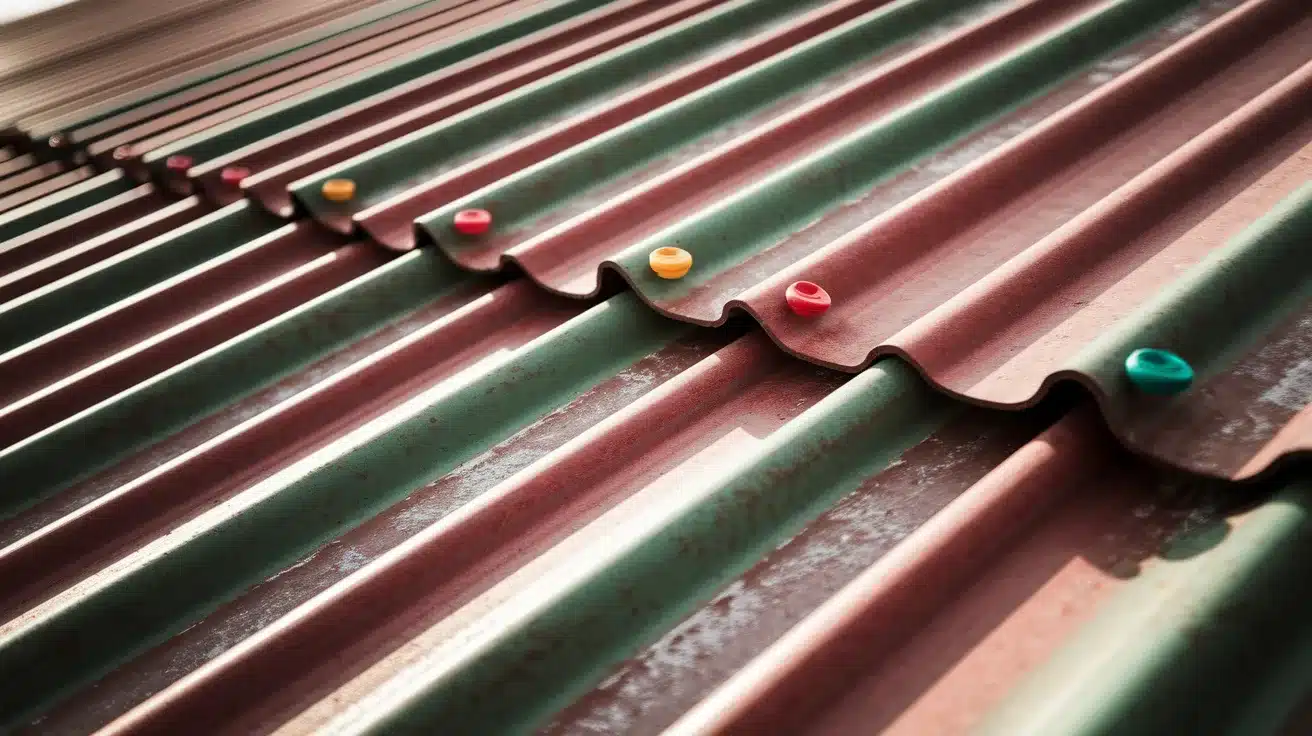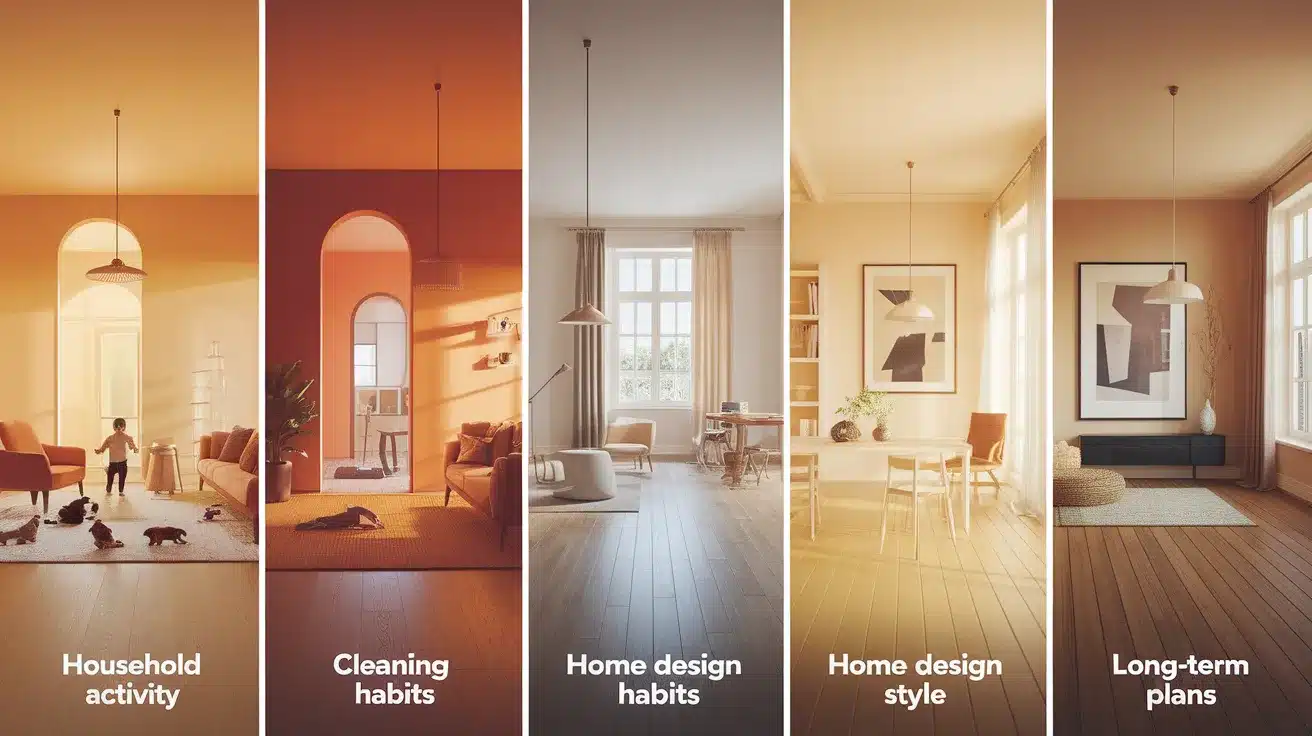Metal roofing offers lasting protection and style for homes. Many homeowners face a choice between standing seam and exposed fastener systems.
Picking the wrong option could lead to extra costs, maintenance issues, or a look that doesn’t fit your home. This choice affects how long your roof lasts and how it looks.
The good news is that both options work well when chosen for the right reasons. The key is matching the roof type to your needs and home design.
This guide covers everything about standing seam and exposed fastener metal roofs. You’ll learn the main differences, costs, benefits, and practical tips for each type.
Keep reading to find the perfect metal roofing solution for your budget, home style, and weather conditions.
Metal Roofing Options: The Basics You Need to Know
Before choosing between metal roof types, it helps to understand what makes each option different. Metal roofs come in various forms, from simple panels to complex systems with extra features.
Your ideal setup depends on several factors:
- Purpose: Will you focus on looks, long-term value, or both?
- Climate: What weather conditions must your roof handle?
- Budget: How much can you spend upfront versus long-term?
The main choice most homeowners face is between standing seam and exposed fastener systems. This decision affects everything from installation to how long your roof will last.
Standing seam hides the fasteners within raised seams, while exposed fastener systems use visible screws to hold panels in place. The right choice depends on your specific needs, home design, and budget limits.
What is a Standing Seam Metal Roof?
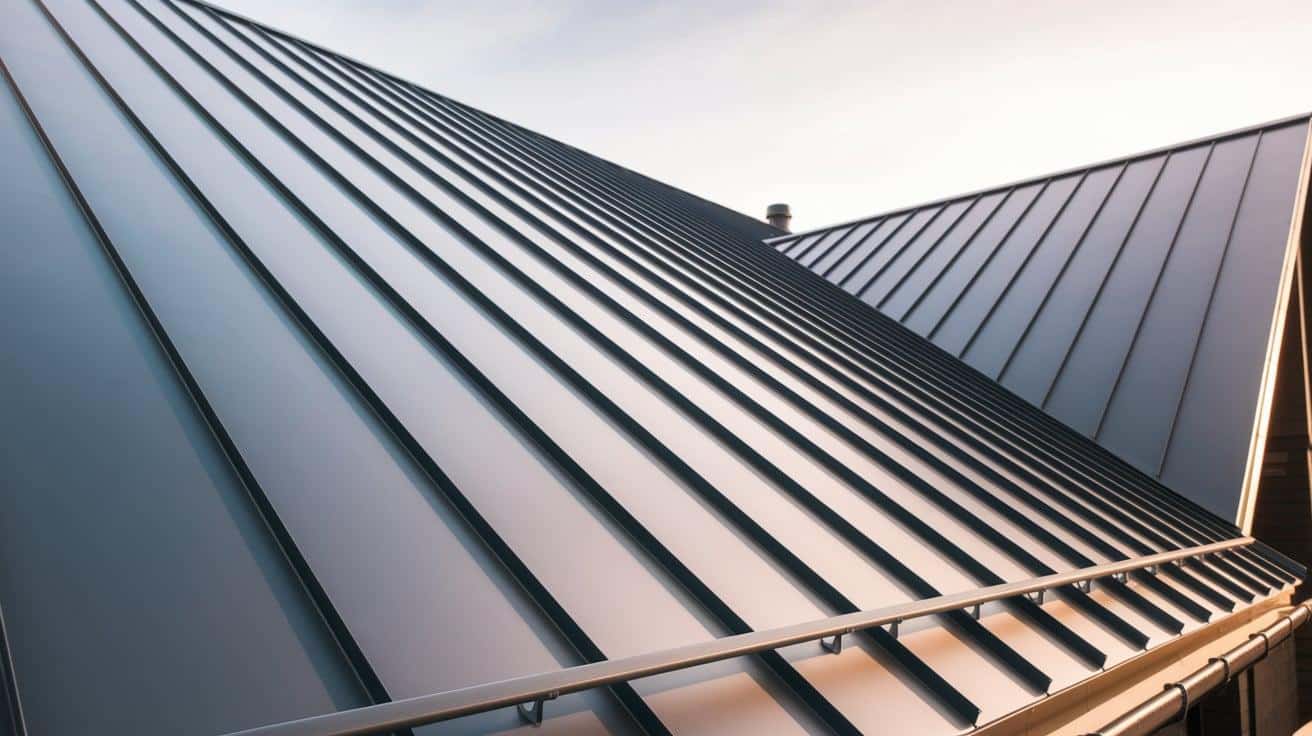
A standing seam metal roof features panels joined by raised seams that hide all fasteners. This hidden fastener design sets it apart from other metal roofing types. The seams stand above the roof surface, creating clean lines and a smooth look.
Standing seam systems need precise installation, making them more complex but also more weather-tight. They typically feature vertical panels that run from ridge to eave, with seams that rise 1-2 inches above the panel surface.
Most standing seam roofs include hidden clips and fasteners that allow for thermal movement, special trim for edges, and often a solid substrate beneath panels.
Some more advanced standing seam systems might also include snow retention features, solar mounting options, or custom panel widths. The installation usually requires trained pros with special tools and methods.
Common Applications
1. Residential Homes: Creates a clean, modern look for houses. The smooth lines work well on both modern and traditional homes.
2. Commercial Buildings: Provides long-term protection for offices and stores. The hidden fasteners reduce maintenance needs over time.
3. High-End Projects: Adds quality and status to upscale homes. The premium look matches the value of more costly properties.
Ideal For
A standing seam roof works best for homeowners who:
- Want a roof that lasts 40-60 years
- Prefer a clean, modern look without visible screws
- Live in areas with heavy snow or extreme weather
- Plan to stay in their home long-term
- Value lower maintenance over time
- Want a roof that can handle solar panel installation
- Care about better resale value for their home
- Need better weather sealing in harsh climates
Pros and Cons
| Pros | Cons |
|---|---|
| Longer lifespan (40-60 years) | Higher upfront cost |
| No exposed fasteners to leak | Requires skilled installers |
| Cleaner, more modern look | Less DIY-friendly |
| Better thermal movement | Harder to replace single panels |
| Fewer points for water entry | More complex repairs |
| Better for snow shedding | Longer installation time |
| Can add value to your home | Fewer color options sometimes |
| Works well with solar panels | May dent from impacts |
What is an Exposed Fastener Metal Roof?
An exposed fastener metal roof uses visible screws to attach panels to the structure below. It focuses on cost-effectiveness and simpler installation rather than the sleek look of hidden fasteners. Exposed fastener systems offer a more basic solution for metal roofing with less cost upfront.
With screws driven directly through the metal panels, these roofs can be installed by more contractors and sometimes even by skilled DIYers. Exposed fastener roofs range from basic corrugated panels to more structured ribbed designs with weather-tight overlaps.
They provide solid protection and metal durability at a lower price point. Many homeowners choose exposed fastener systems as their first step into metal roofing.
Common Applications
1. Farm Buildings: Creates tough, low-cost roofing for barns and sheds without major expenses.
2. Budget-Conscious Homes: Offers metal roof benefits at a more accessible price point for average homes.
3. Garages and Workshops: Uses simpler panels for buildings where looks matter less than function.
4. Older Roof Overlays: Provides a way to cover existing roofs without full removal in some cases.
Ideal For
An exposed fastener roof suits homeowners who:
- Focus more on initial cost than long-term value
- Need quicker, simpler installation
- Live in milder climate areas
- Might want to handle some maintenance themselves
- Have simpler roof designs without many valleys
- Plan to sell their property in 5-10 years
- Need a metal roof option that fits tighter budgets
- Own secondary buildings like garages or sheds
Pros and Cons
| Pros | Cons |
|---|---|
| More budget-friendly option | Shorter lifespan (20-30 years) |
| Simpler installation process | Exposed screws can leak over time |
| More contractors can install it | Requires regular maintenance |
| Easier DIY repairs possible | Fasteners need periodic checking |
| Wide range of panel styles | Less smooth, modern look |
| Lower cost for large areas | More noise during rain/hail |
| Faster to install | Lower long-term home value |
| Works on lower roof slopes | Less snow shedding ability |
Standing Seam vs. Exposed Fastener: Key Differences
When planning a metal roof, understanding the differences between these options helps you make the right choice. Both roof types serve the same basic purpose, protecting your home with metal panels, but with different features and needs.
The main difference lies in how panels attach to your roof. Standing seam hides fasteners within raised seams, while exposed fastener systems use visible screws through the panels. This key distinction affects everything from cost and looks to how long your roof will last.
Your choice should match your budget, home design, and long-term plans. The chart below breaks down the major differences to consider before deciding.
| Feature | Standing Seam | Exposed Fastener |
|---|---|---|
| Installation Method | Hidden clips and fasteners inside seams; requires special training | Screws driven directly through panels; simpler methods |
| Cost Comparison | $10-16 per square foot installed; higher labor costs | $5-9 per square foot installed; lower labor costs |
| Weather Protection | Better protection against leaks; fewer entry points for water | More penetrations through metal; relies on gaskets |
| Lifespan | 40-60 years with minimal maintenance | 20-30 years with regular maintenance |
| Visual Appeal | Clean, modern lines without visible fasteners | More traditional look with visible screw pattern |
Factors to Consider When Choosing
The choice between standing seam and exposed fastener affects how your roof will perform for decades. Before making your decision, consider these five key factors that will help you match your roof to your specific needs and home situation.
1. Your Budget Reality
Your budget often becomes the deciding factor when choosing between roof types:
- Initial investment: Standing seam costs 40-60% more upfront due to materials and labor.
- Long-term expenses: Exposed fastener roofs need more maintenance and earlier replacement.
- Return on investment: Standing seam often adds more home value but at a higher initial cost.
- Staged approach: Some homeowners use exposed fastener for garages and standing seam for homes.
2. Local Climate Conditions
The weather in your area plays a major role in roof performance:
- Snow regions: Standing seam allows snow to slide off better without catching on fasteners.
- High wind areas: Concealed fastener systems often handle strong winds better over time.
- Coastal regions: Salt exposure makes quality materials more important for both systems.
- Temperature swings: Standing seam handles expansion and contraction with less stress.
3. Home Style and Look
Your roof should complement your home’s style:
- Modern homes: Clean lines of standing seam often match better with modern design.
- Traditional houses: Exposed fastener panels can fit well with more classic home styles.
- Color choices: Both systems offer many colors, but panel profiles differ significantly.
- Roof visibility: More visible roofs might justify the cleaner look of standing seam.
4. Maintenance Comfort Level
Think about how much roof care you’re willing to handle:
- DIY ability: Exposed fastener allows easier DIY repairs if you’re handy.
- Maintenance schedule: Exposed systems need fastener checks every 1-2 years.
- Long-term ownership: Standing seam requires less attention over decades.
- Access issues: Harder-to-reach roofs make low-maintenance options more valuable.
5. Installation Expertise
The installation quality greatly affects performance:
- Local contractors: Check which system local pros have more experience installing.
- Special details: Complex roof shapes may need more skilled installation.
- Project timeline: Exposed fastener installs faster if time matters.
- Warranty needs: Better warranties often come with certified installers for standing seam.
Creative Ideas for Standing Seam Roofs
The right design can turn your roof from basic to stunning. Here are some creative ways to make your standing seam roof stand out, whether you’re looking for a statement piece or a practical addition to your home.
1. Mixed Material Combinations
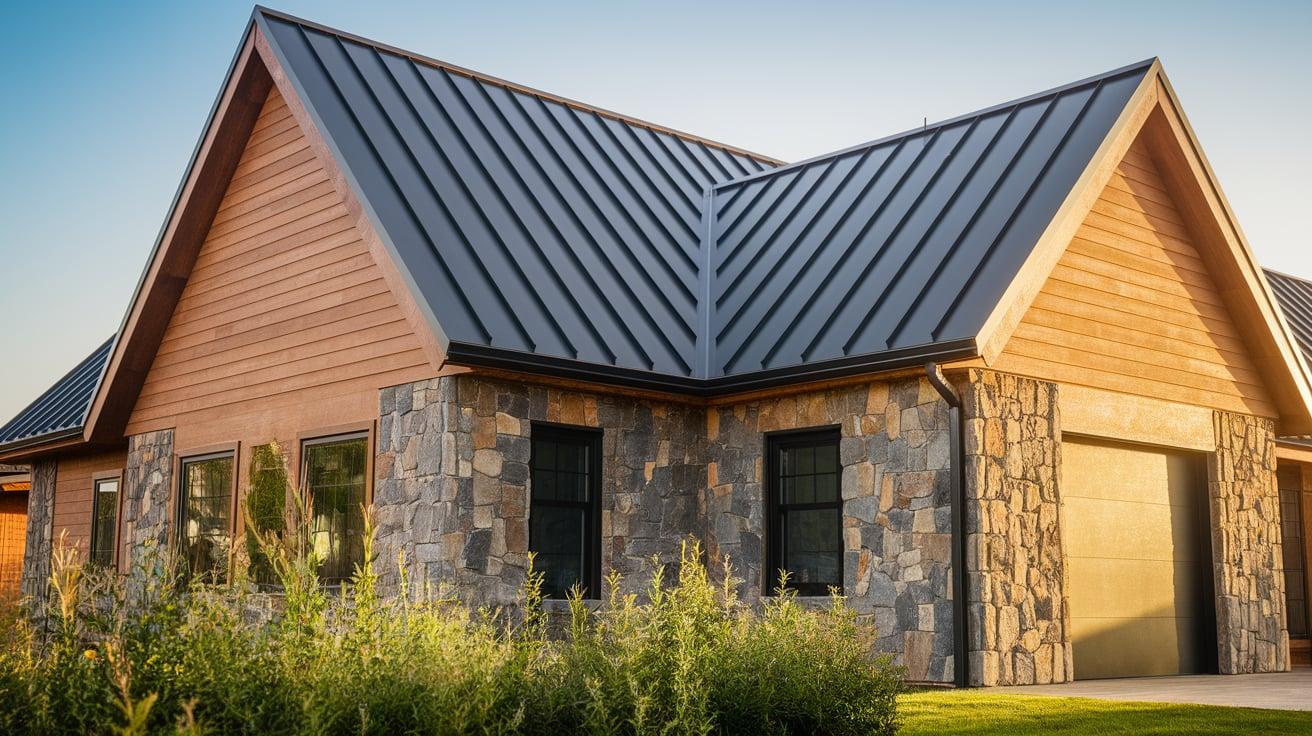
Pair standing seam with natural stone or wood for contrast. Use metal on main roof areas and mix other materials on gables or walls. This creates visual interest and breaks up large metal areas. This setup helps your home stand out while keeping the benefits of metal roofing.
2. Custom Seam Spacing
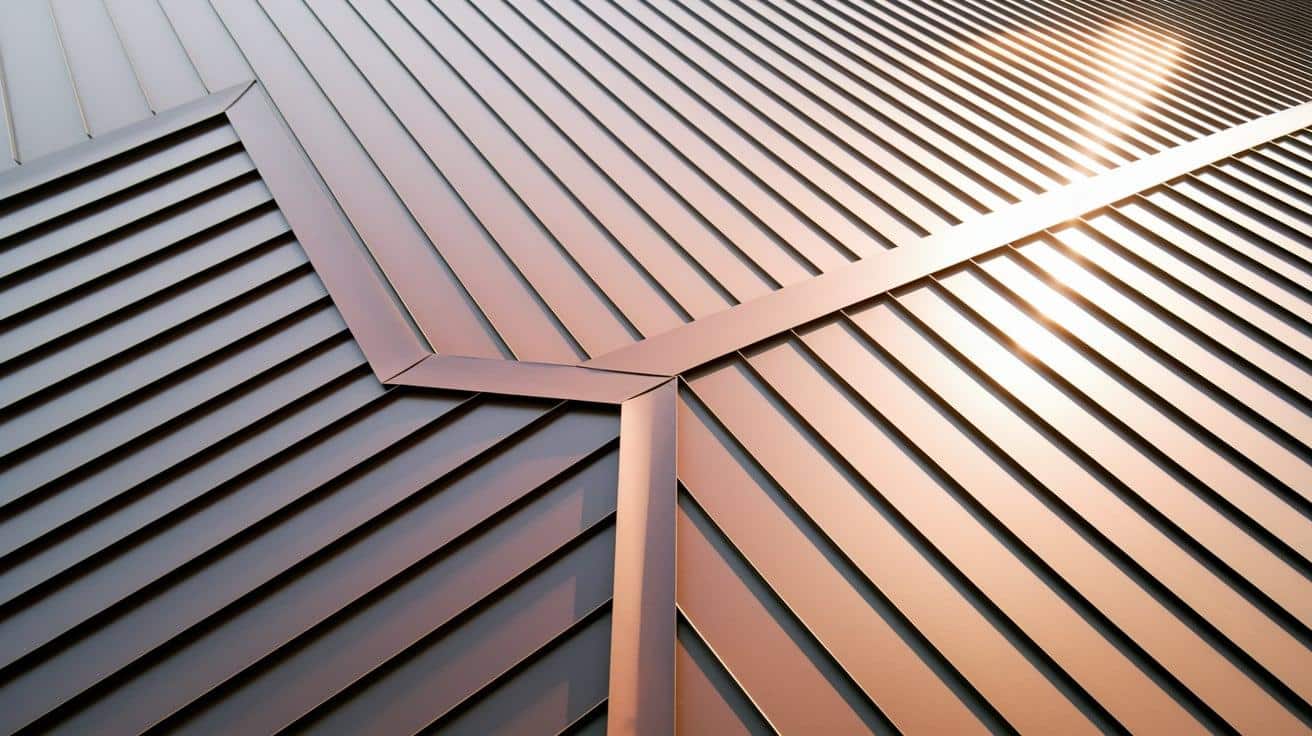
Vary the width between seams to create unique patterns on your roof. Standard panels often come in set widths, but custom options allow for more creative layouts. This subtle change makes your roof look custom-designed rather than mass-produced.
3. Color Zoning with Panels
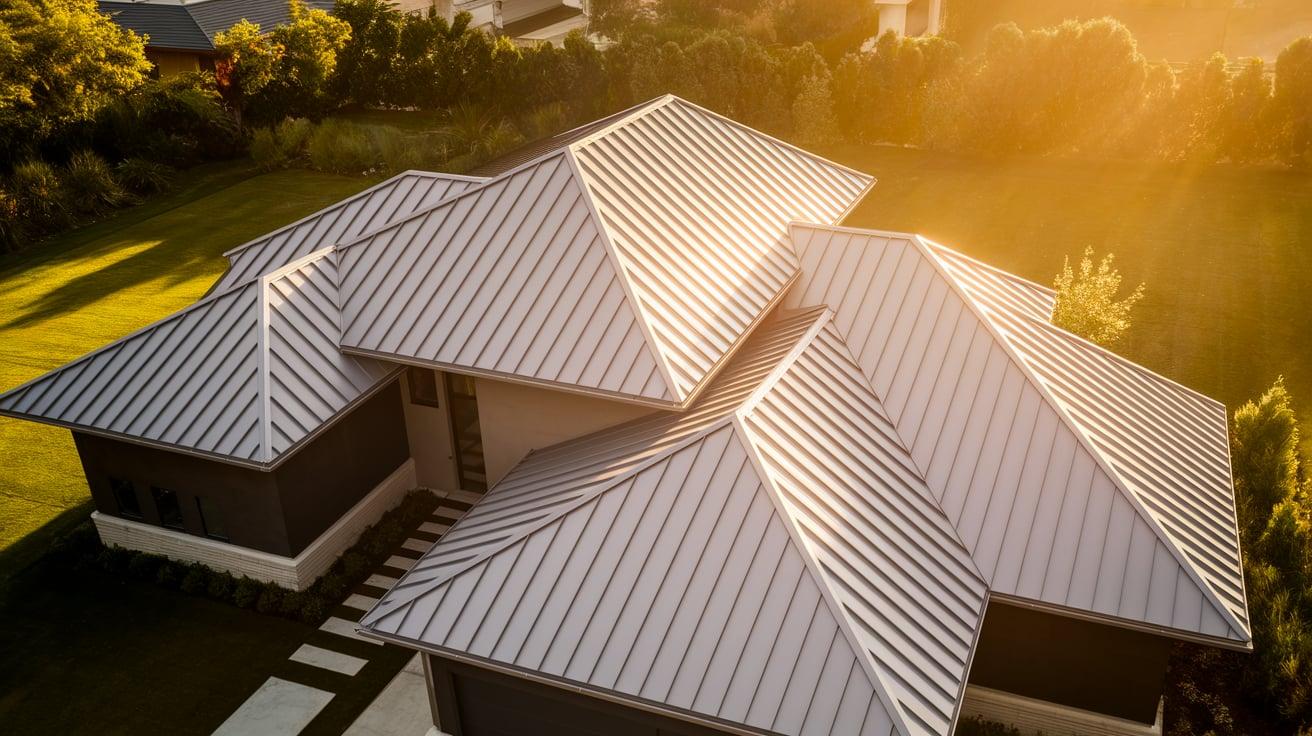
Use different but complementary colors for different roof sections. For example, a darker color on lower roof areas and a lighter shade above. This adds depth and interest to your home’s profile while maintaining the clean lines of standing seam.
4. Curved Panel Applications
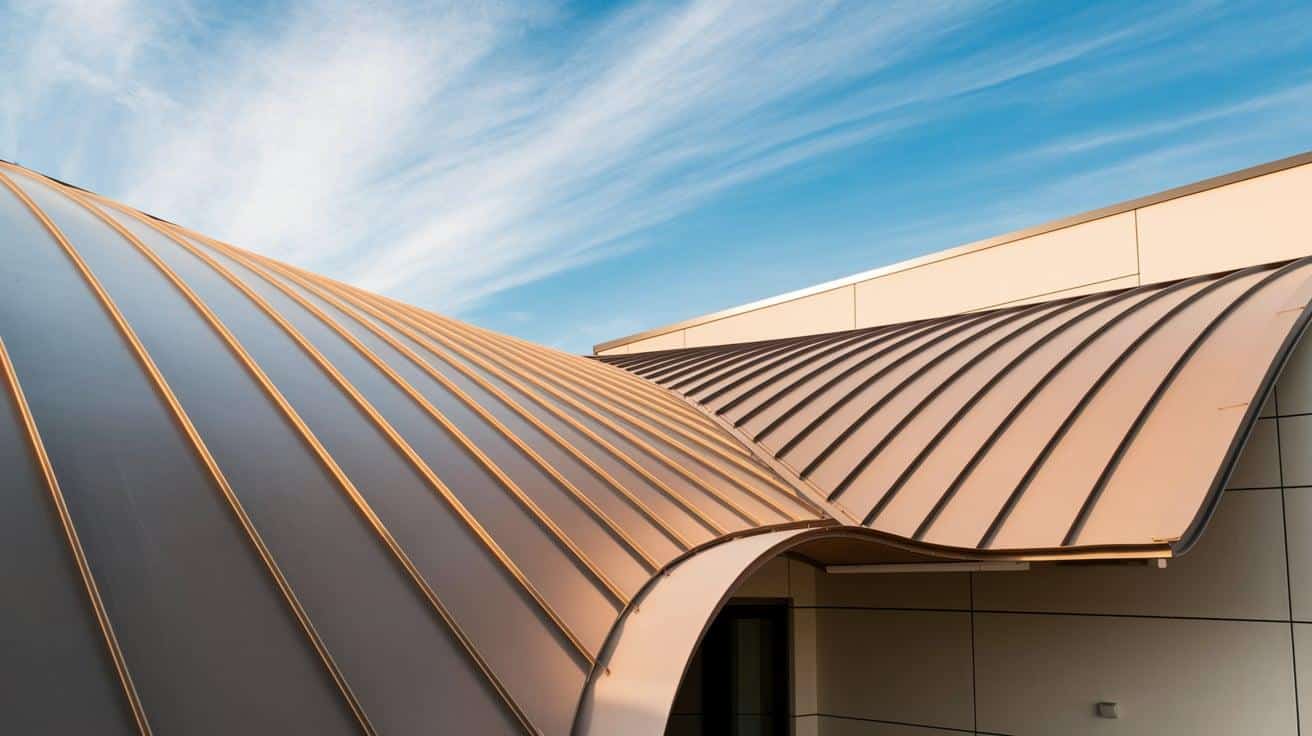
Install standing seam on curved roof sections for a soft, modern look. The panels can be shaped to follow gentle curves, creating a smooth, flowing roof line. This works well for entry features, bay windows, or accent areas.
Creative Ideas for Exposed Fastener Roofs
The right design can make your exposed fastener roof both practical and stylish. Here are some creative ways to enhance your exposed fastener roof.
1. Patterned Panel Layouts
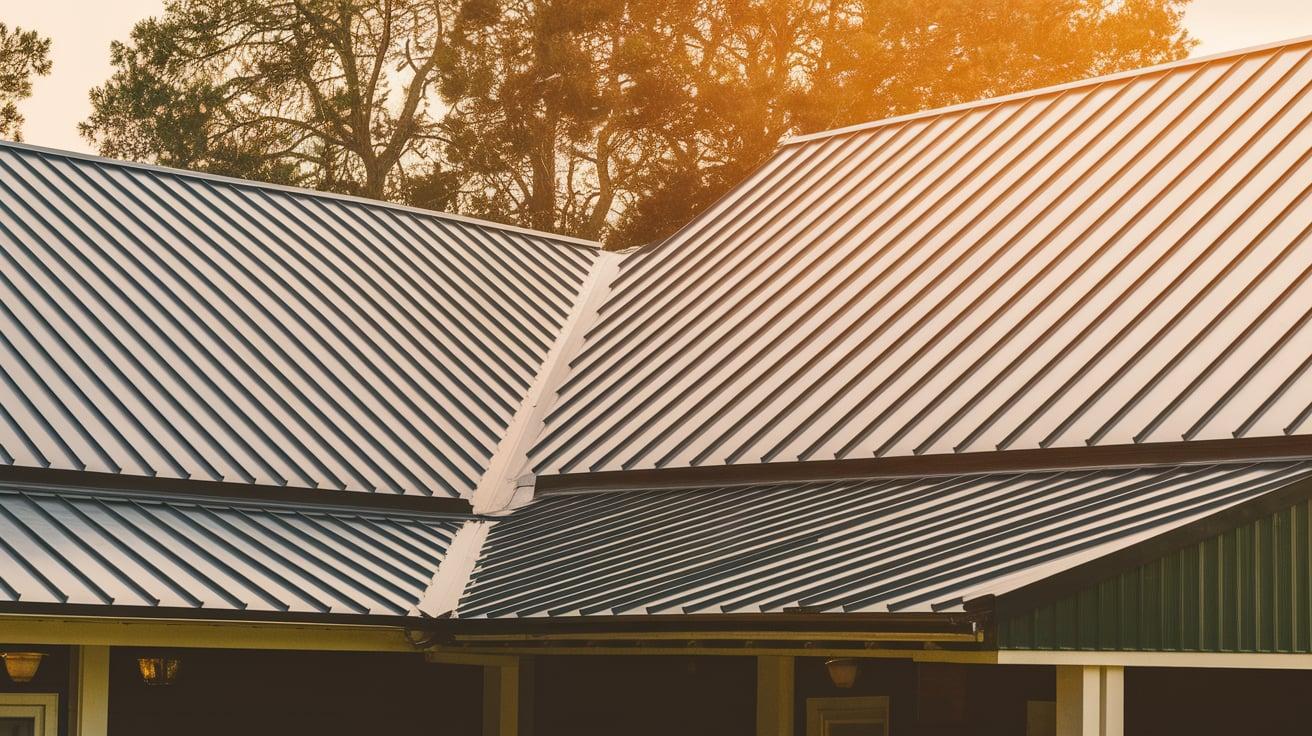
Create visual interest by alternating panel directions or using multiple panel profiles. For example, use standard ribbed panels on main roof areas but switch to corrugated on porch sections. This simple change adds character without extra cost.
2. Color-Matched Fasteners
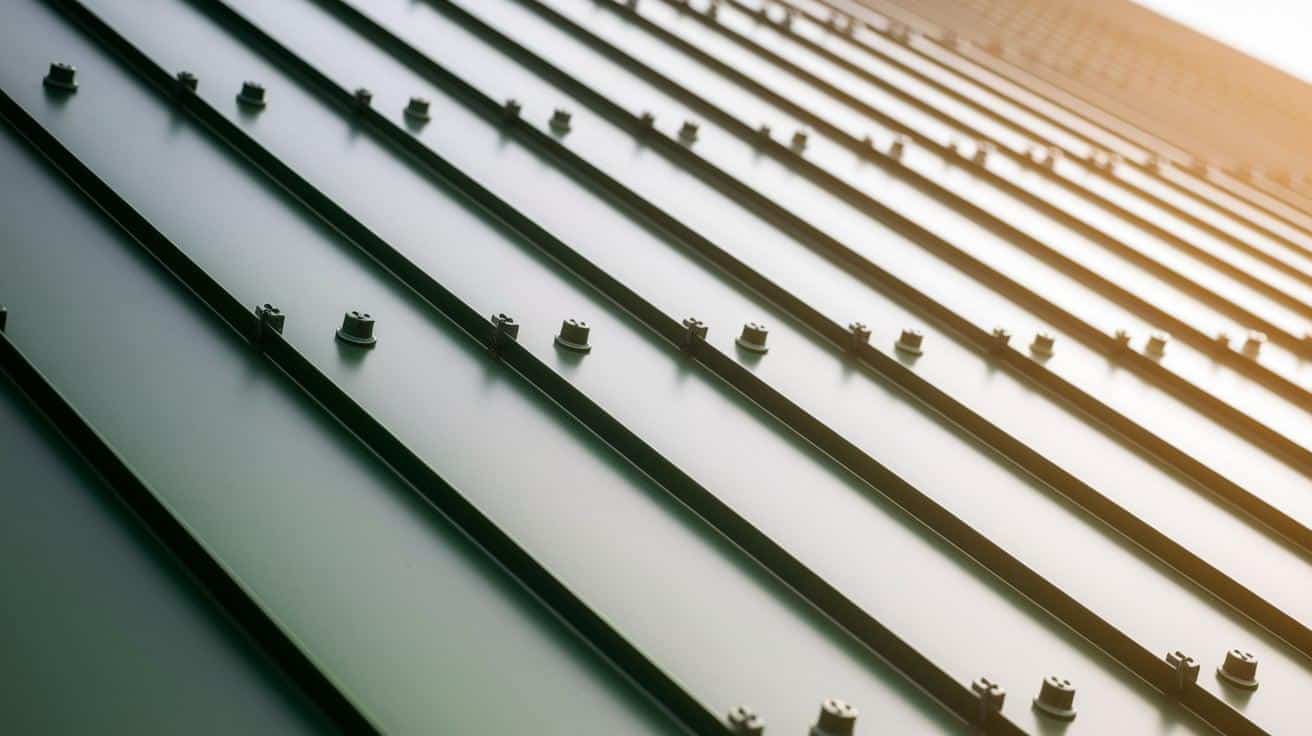
Use screws that perfectly match your panel color for a more uniform look. This small detail helps minimize the visual impact of exposed fasteners and creates a more cohesive look. Some suppliers now offer exact color matches for this purpose.
3. Accent Trim Highlights
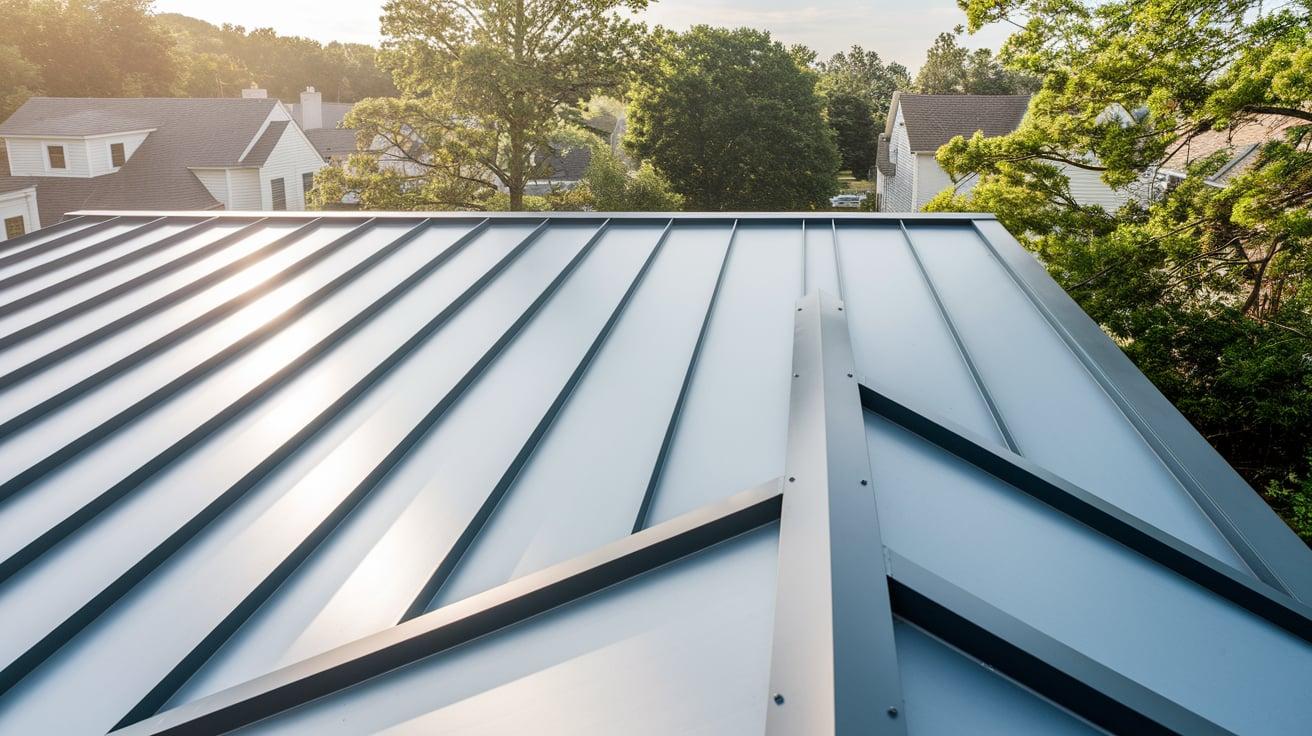
Add custom trim in contrasting colors around edges, valleys, and peaks. While the panels themselves remain simple, the trim details create visual interest and a more finished look. This works especially well with bold color choices.
4. Mixed Panel Profiles
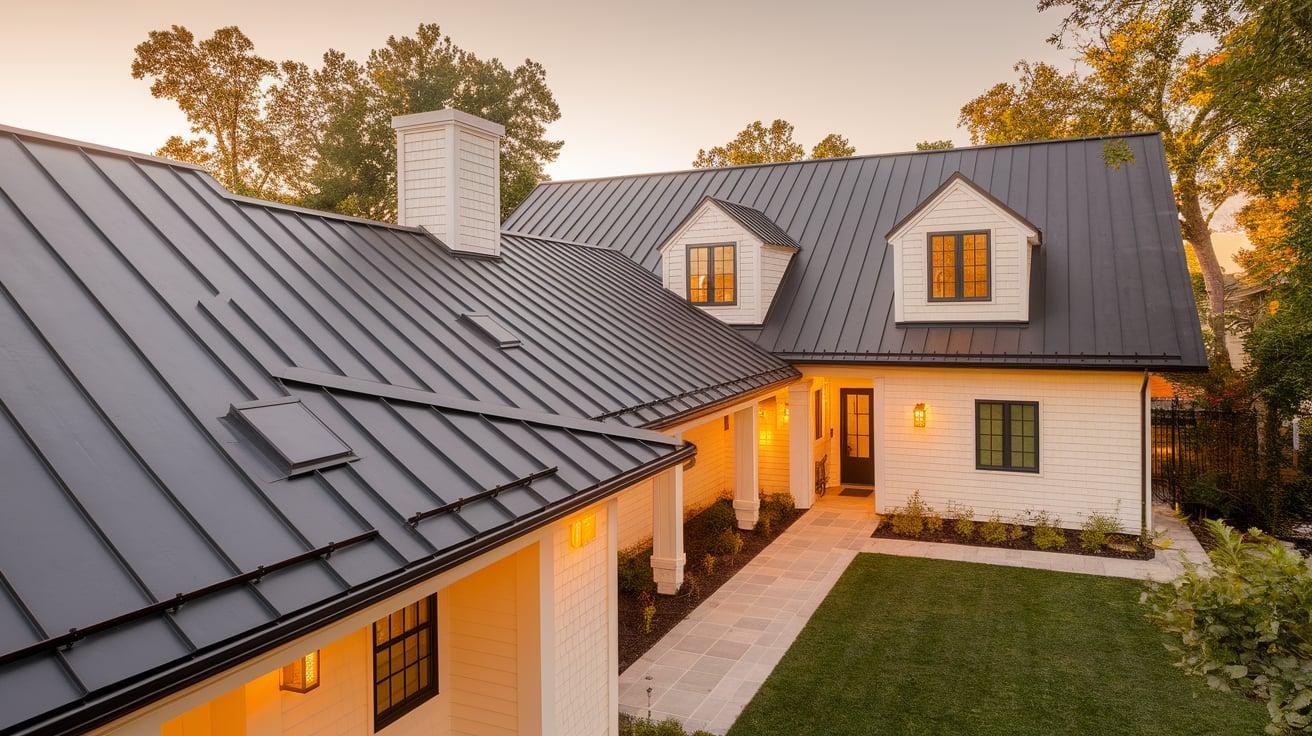
Combine different panel types for practical and visual benefits. For example, use low-profile panels on the main roof but switch to higher ribs for accent areas. This creates texture and interest while still keeping costs reasonable.
Which Roof Type Fits Your Needs? A Simple Quiz
Not sure whether standing seam or exposed fastener is right for you? This quick quiz can help point you in the right direction based on your specific needs and situation.
Question 1: What’s Your Budget for This Project?
A) Under $10,000
B) $10,000-$15,000
C) $15,000-$25,000
D) Over $25,000
Question 2: How Long Do You Plan to Stay in Your Home?
A) Less than 5 years
B) 5-10 years
C) 10-20 years
D) More than 20 years
Question 3: How Important is Low Maintenance to You?
A) I don’t mind regular maintenance
B) I prefer some maintenance, but nothing major
C) I want minimal maintenance
D) I want the lowest possible maintenance
Question 4: What’s Your Local Weather Like?
A) Mild, with little extreme weather
B) Moderate seasonal changes
C) Frequent storms or high winds
D) Extreme conditions (heavy snow, coastal, etc.)
Question 5: How Important is Your Roof’s Appearance?
A) Function matters more than looks
B) Nice appearance but on a budget
C) Clean look is important to me
D) Premium appearance is a top priority
Your Results
Mostly A’s: A Basic Exposed Fastener Roof is your best match. You’d benefit from the lower cost and simpler installation for your situation.
Mostly B’s: An Enhanced Exposed Fastener System with quality panels and proper installation would serve you well. You need more than basics but don’t need the cost of standing seam.
Mostly Cs: A Standard Standing Seam System would be a good investment. Your situation justifies the better protection and looks of hidden fasteners.
Mostly D’s: A Premium Standing Seam System makes sense for your needs. Your home, climate, and plans justify the investment in a top-quality roof.
Conclusion
Deciding between standing seam and exposed fastener comes down to your personal needs. Each option offers different benefits depending on your budget, home, and plans.
Standing seam shines when you need long-term value and cleaner looks. The hidden fasteners reduce maintenance and often last longer. Exposed fastener systems work better for tighter budgets or shorter-term solutions.
Think about your local weather, how long you’ll stay in your home, and what matters most to you. A simple exposed fastener roof might serve you well now, with standing seam as a future option.
Whatever you choose, your metal roof will provide better protection than many other materials. The right metal roof turns a basic home need into a lasting investment that pays off over many years.
Frequently Asked Questions
How Much More Does Standing Seam Cost Than Exposed Fastener?
Standing seam typically costs 40-60% more than exposed fastener systems, with the price difference coming from both materials and more skilled labor needs.
Can I Install Either Roof Type Myself?
Exposed fastener roofs can sometimes be DIY projects for skilled homeowners, while standing seam almost always requires professional installation due to specialized tools and methods.
Which Metal Roof Type Is Quieter During Rain?
Standing seam with a solid deck beneath tends to be quieter, while exposed fastener systems may create more noise during rain or hail unless extra insulation is added.
How Often Do Exposed Fastener Roofs Need Maintenance?
Exposed fastener roofs should have fasteners checked and tightened every 1-2 years and may need gasket replacement every 10-15 years depending on climate and conditions.



